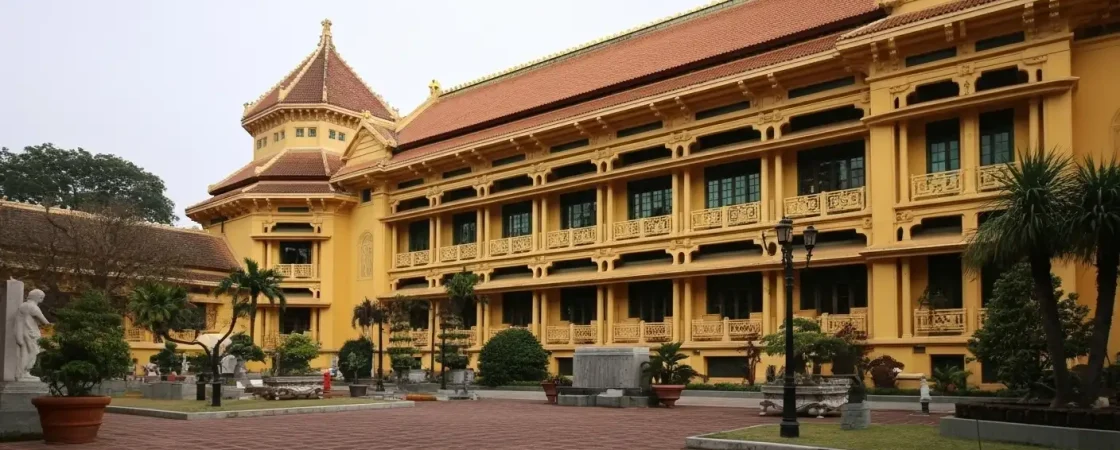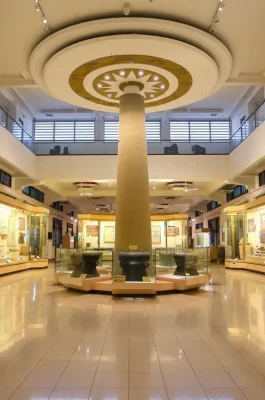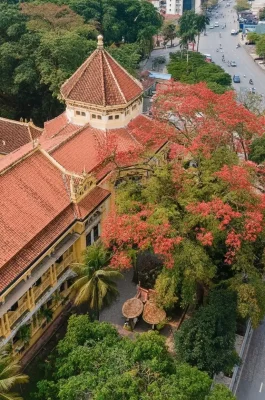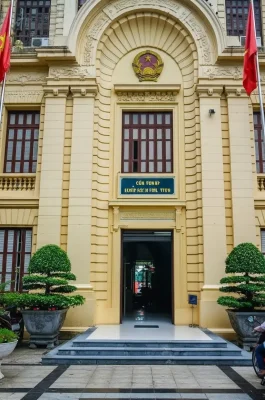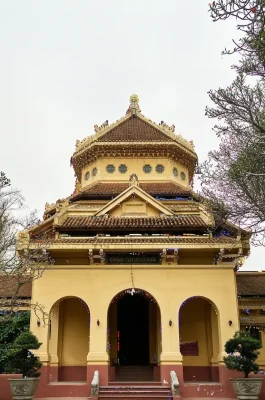The Vietnam National Museum of History (VNMOH) is the premier institution for understanding the comprehensive historical narrative of Vietnam, from its earliest inhabitants to the establishment of the modern state. Its exhibits are presented chronologically, offering a clear and detailed look at the nation’s ancient origins and imperial past.
I. Location and Architecture
Location: The VNMOH has two primary locations near Hoàn Kiếm Lake, but the main historical collection (prehistoric to 1945) is housed at 1 Tràng Tiền Street, which is the most popular building for tourists.
Architecture: The main building is a masterpiece of French Indochinese architecture (built in 1926). It features strong, classic European lines combined with traditional Vietnamese design elements, such as curved tiled roofs. The building itself is a significant cultural artifact, lending an elegant backdrop to the historical exhibits.
Exhibition Focus: The museum is dedicated to charting Vietnam’s historical development, focusing heavily on archaeological treasures and artifacts from the various imperial dynasties that ruled the country.
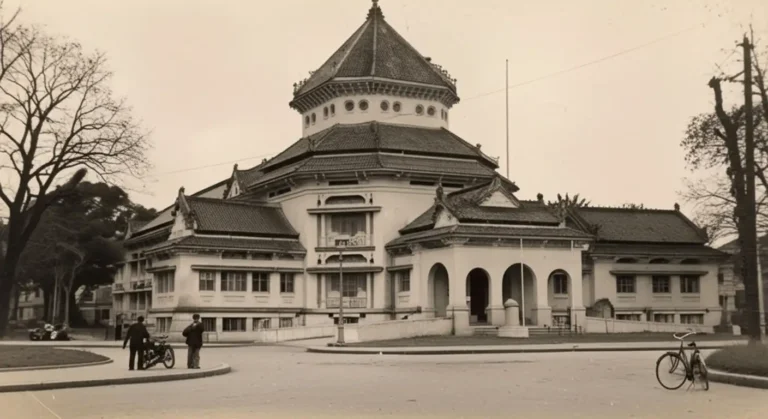
II. Key Exhibits and Cultural Insight
The collection spans four millennia and is divided into major historical periods:
Prehistoric Era (Stone Age to Bronze Age): Displays relics from the Paleolithic, Neolithic, and Bronze Ages, including artifacts from the famous Đông Sơn culture, notably the magnificent Đông Sơn Bronze Drums, which are national treasures.
Early Kingdoms and Imperial Dynasties: Covers the period of Chinese domination and the rise of Vietnamese dynasties (Lý, Trần, Lê, etc.) who maintained Vietnamese independence, showcasing royal ceramics, goldware, and stone carvings.
Champa and Funan: Exhibits artifacts from the ancient kingdoms that existed in the central and southern regions of modern Vietnam, adding a wider perspective on Southeast Asian history.
The Nguyễn Dynasty (up to 1945): Focuses on the last imperial dynasty, the period of French colonialism, and the early stages of the revolution leading up to the August Revolution of 1945.
III. Practical Visitor Information
| Detail | Information |
|---|---|
| Address | No. 1 Tràng Tiền Street, Hoàn Kiếm District, Hà Nội, Vietnam. |
| Getting There | The museum is centrally located near the Hanoi Opera House and the main Post Office, making it an easy walk from Hoàn Kiếm Lake and the Old Quarter. |
| Opening Hours | 8:00 AM – 12:00 PM and 1:30 PM – 5:00 PM (Daily). |
| Closed: Mondays. | |
| Admission Fee | Adults: 40,000 VND per person (approx. $1.6 USD) |
| Students (with ID): 20,000 VND | |
| Children (6-16): 10,000 VND / Under 6: Free | |
| Photography Fee | An extra fee is charged for taking pictures inside (usually 15,000–30,000 VND per camera). |
| Phone Number | +84 24 3825 2853 |
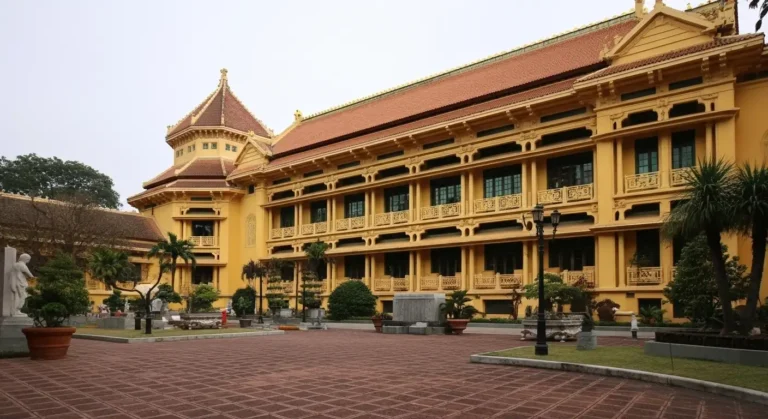
IV. Traveler's Tips
Double Location: Note that this ticket covers both the 1 Traˋng Tieˆˋn building (ancient history) and the 216 Traˆˋn Quang Khải building (modern history, 19th century to present). Many tourists only visit the Tràng Tiền location due to its historical architecture and key ancient artifacts.
Audio Guides: Guided tours in Vietnamese, English, and French are available. The exhibits are detailed, so consider an audio guide or guided tour to fully appreciate the artifacts’ context.
Nearby Attractions: The museum is perfectly situated to be combined with visits to the Hanoi Opera House and the Tràng Tiền Plaza (for a contrast of French colonial and modern Hanoi culture).
